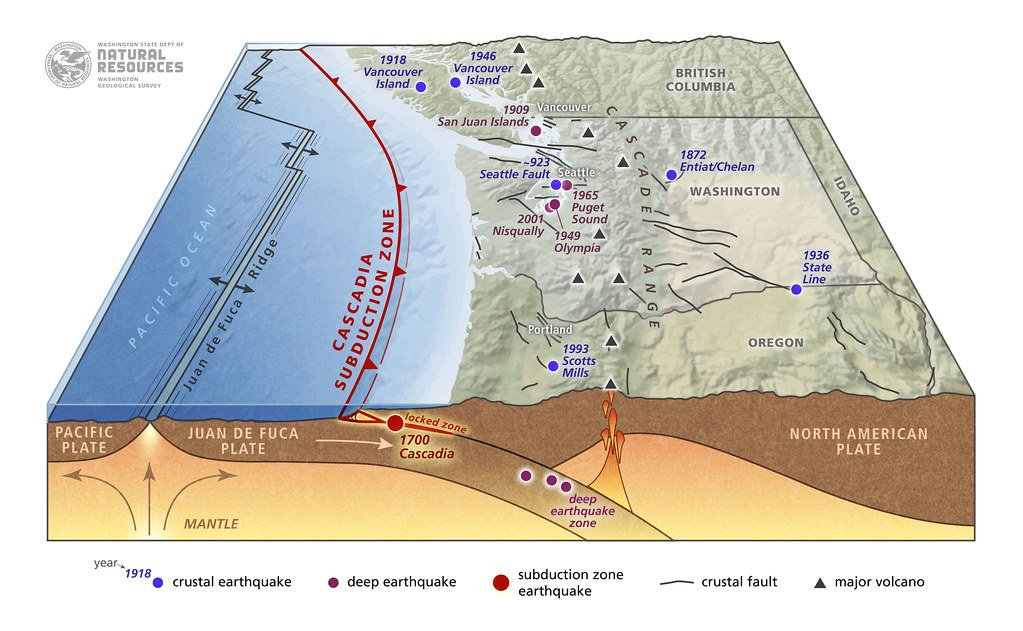You feel the ground beneath your feet every day, never questioning its stability. Yet beneath the Pacific Northwest, one of Earth’s most powerful geological forces waits silently. Scientists have discovered something that keeps seismic experts awake at night. The last time this sleeping giant awakened, it was 1700, and the tremors were felt as far away as Japan.
Today, residents from Northern California to British Columbia live atop one of nature’s most fearsome ticking time bombs. What researchers have learned about the Cascadia Subduction Zone should concern every person living in the region. Still, few fully grasp what scientists now understand about this colossal threat.
The Hidden Monster Beneath Your City

The Cascadia Subduction Zone stretches across approximately 1,000 kilometers (about 620 miles) of seafloor, running from Northern California to British Columbia. Unlike familiar faults like San Andreas, this massive underwater fracture system remains largely invisible to most residents. This area hosts a megathrust fault, where tectonic plates move against each other in a highly dangerous way.
At depths shallower than 30 kilometers, the Cascadia zone is locked by friction while stress slowly builds up as the subduction forces act, until the fault’s frictional strength is exceeded and the rocks slip past each other in a megathrust earthquake. Think of it like a massive spring being compressed for centuries. When it finally releases, the energy unleashed can reshape entire coastlines.
The result: the world’s greatest earthquakes, shaking both seabed and land, and generating tsunamis 100 feet high or more. Major cities affected by a disturbance in this subduction zone include Vancouver and Victoria, British Columbia; Seattle, Washington; and Portland, Oregon.
When Giants Last Stirred: The 1700 Earthquake
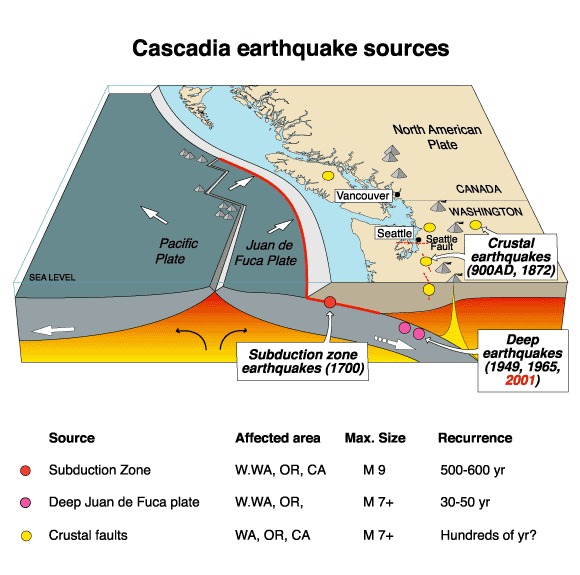
The last earthquake that occurred in this fault was on January 26, 1700, with an estimated 9.0 magnitude. This earthquake caused the coastline to drop several feet and a tsunami to form and crash into the land. What makes this historical event remarkable is how scientists discovered it happened at all.
Japanese annals had reports of a sixteen-foot tsunami that struck the coast of Honshu Island during the Genroku era. Since no earthquake had been observed to produce it, scholars dubbed it an “orphan tsunami.” Translating the Japanese calendar, researchers found the incident had taken place around midnight of January 27-28, 1700, ten hours after the earthquake occurred.
The quake probably ruptured from Northern California, from the Mendocino region, through Oregon, Washington and into British Columbia. Scientists are talking about 600-700 miles of fault that ruptured in a single event.
The Ominous Pattern of Destruction
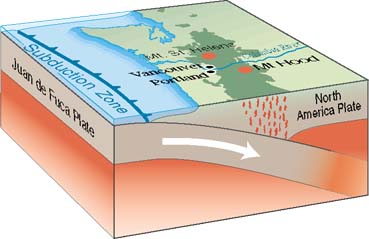
There have been 43 earthquakes in the last 10,000 years within this fault. Cascadia earthquakes are expected every 300-500 years, yet the statistical reality is more sobering than many realize. As of January 26th, 2024, the Pacific Northwest has currently gone 324 years without a megathrust earthquake.
Eighty percent of the time, the fault has not had to wait 324 years for the strain to break it. The math shows that 93% of the time, the fault has not had to wait 324 years for the strain to break it. This means the region has already exceeded the typical waiting period between major events.
The longest span of time between major Cascadia earthquakes in the past 4 millennia was only 291 years until now. The Pacific Northwest hasn’t had an interval longer than 344 years in over 6 millennia. You’re living in uncharted seismic territory.
Scientists Discover the Fault’s Most Dangerous Secret
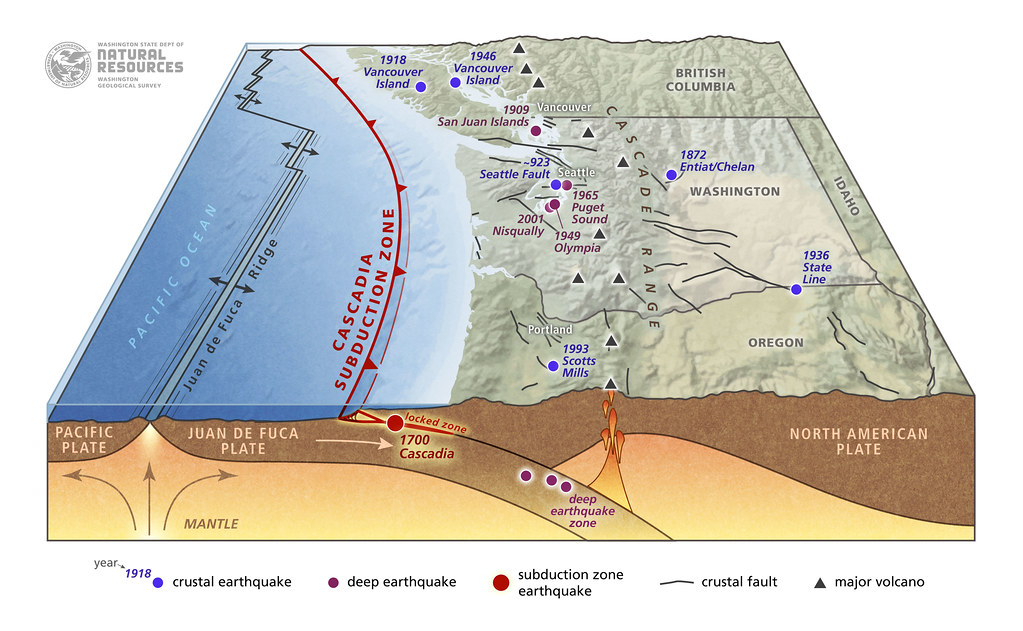
New research mapping the Cascadia Subduction Zone is giving scientists clues about the state of the fault line as the Pacific Northwest awaits the next major quake. Researchers found that the Cascadia zone is “much more complex” than previously thought.
New research provides a more detailed map of the Cascadia Subduction Zone that hints the megathrust fault is not just one continuous structure, but is divided into at least four segments, each potentially somewhat insulated against movements of the others. However, one segment has scientists particularly worried.
The researchers zeroed in on one segment which runs from southern Vancouver Island alongside Washington state. In contrast, the Vancouver-Washington segment is quite smooth. This means that it may be more likely to rupture along its entire length at once, making it potentially the most dangerous section. This means that the southern Washington to southern Vancouver Island segment is the most likely to give off a major earthquake.
The Tsunami Threat That Defies Imagination
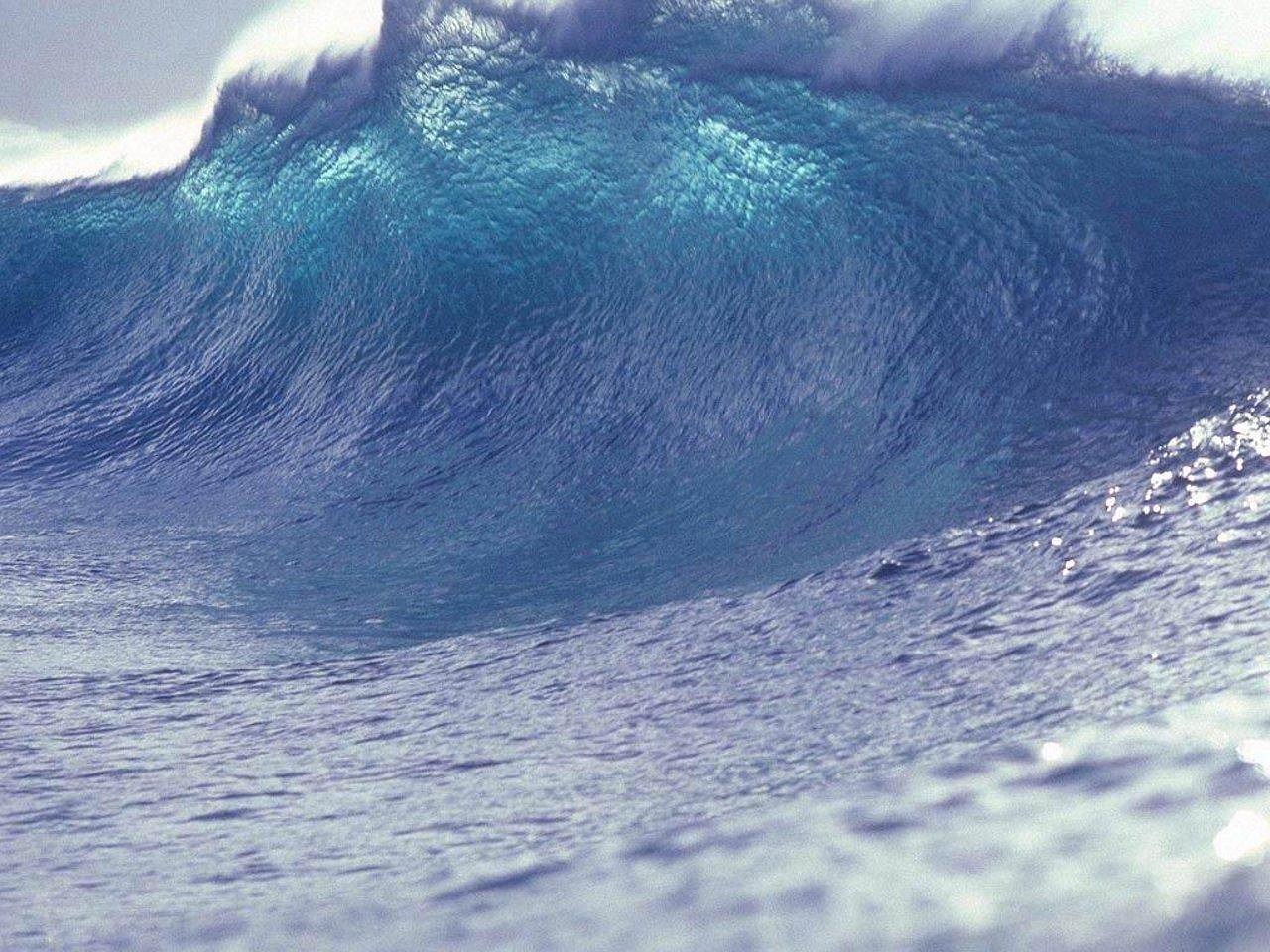
When the fault ruptures, the earthquake represents only the beginning of the disaster. When an earthquake rips along the Cascadia Subduction Zone fault, tsunami waves as tall as 100 feet could barrel toward shore. A tsunami will reach the coast in 15 to 30 minutes in some locations. It may be as high as 30 to 40 feet in some places.
FEMA projects that a 9 magnitude earthquake could produce a tsunami up to 80 feet tall, reaching the coast 10 to 30 minutes after the earthquake began. An estimated 8,000 people in Washington and Oregon would die from the tsunami, and another 5,800 from the earthquake itself.
When the earthquake hits, the shaking will most likely be the ONLY warning you’ll get that a tsunami is coming. As soon as the earth stops shaking, move to high ground!! Don’t hesitate. Unlike distant tsunamis that provide hours of warning, a Cascadia event leaves you with mere minutes to reach safety.
Your City’s Shocking Vulnerability
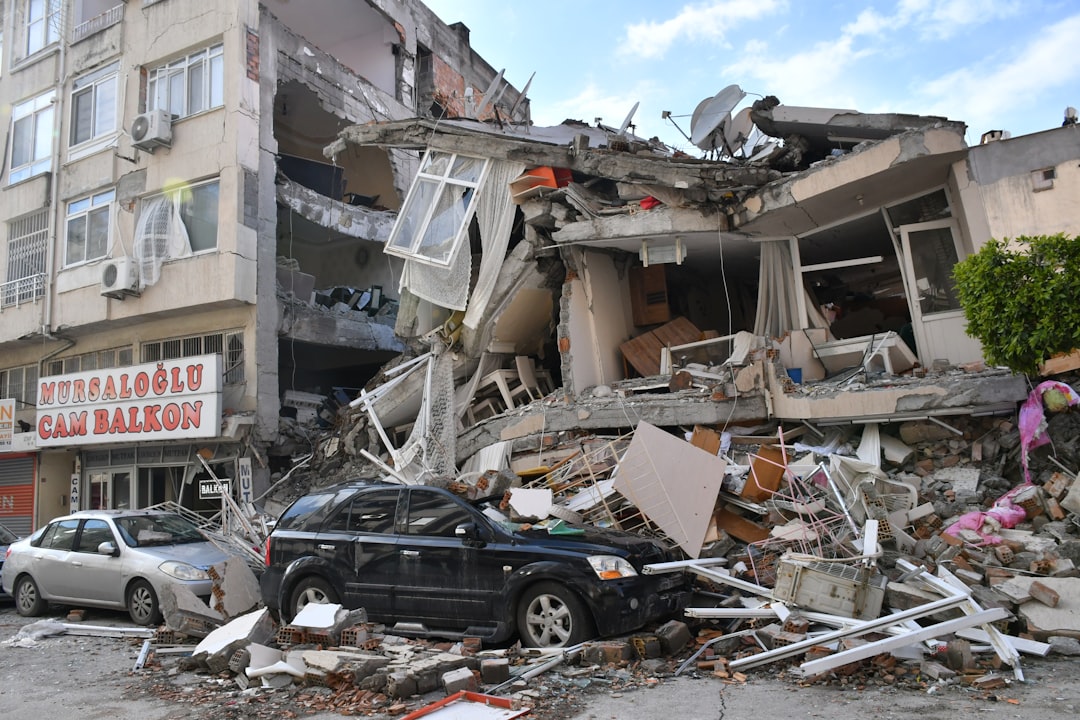
Geologic fossil evidence shows that previous Cascadia earthquakes immediately dropped the land level and turned dry ground into tidal mudflats in estuaries along the Pacific Northwest. “That’s how we have ports there … and that’s where we built towns, and all that area is gonna drop down maybe over a meter, up to two meters”.
Seattle is built atop a sedimentary basin with relatively soft soil, which would amplify the strength of a seismic shock. “A good analogy is, this is like a bowl of Jell-O. If you have a bowl of Jell-O, or a Jell-O mold on top of a plate, and you shake that plate, the Jell-O is so weak it’s going to move much more than the plate that you’re shaking”.
Researchers found the sedimentary basin under the city can amplify the type of ground motion that’s hardest on high-rises by a factor of two to five – much more than previous estimates. The type of shaking expected when the offshore fault called Cascadia Subduction Zone ruptures is particularly hazardous to high-rises.
Why Your Building Codes Aren’t Ready

Building codes are all built on the California experience, because that’s where we’ve had a lot of earthquakes and a lot of building and infrastructure damage. So we haven’t really incorporated long-duration effects in building codes that are in use in the U.S., because we haven’t really had long-duration earthquakes.
The Cascadia fault is so extended that the resulting quake is expected to last for about 100 seconds. That’s significantly longer than the duration of a typical California earthquake. The shaking can last minutes. So, imagine not being able to stand for three, four, five minutes and imagine the forces that our buildings, and bridges, and dams have to put up with in order to weather that event.
Seattle has about 1,100 unreinforced masonry buildings, while Portland has more than 1,650. The analysis found that moderate seismic upgrades to older buildings could slash building repair costs from $24 billion to $6.5 billion, and reduce the number of people killed or injured from more than 18,000 to about 2,000.
The Reality of Survival When Chaos Strikes
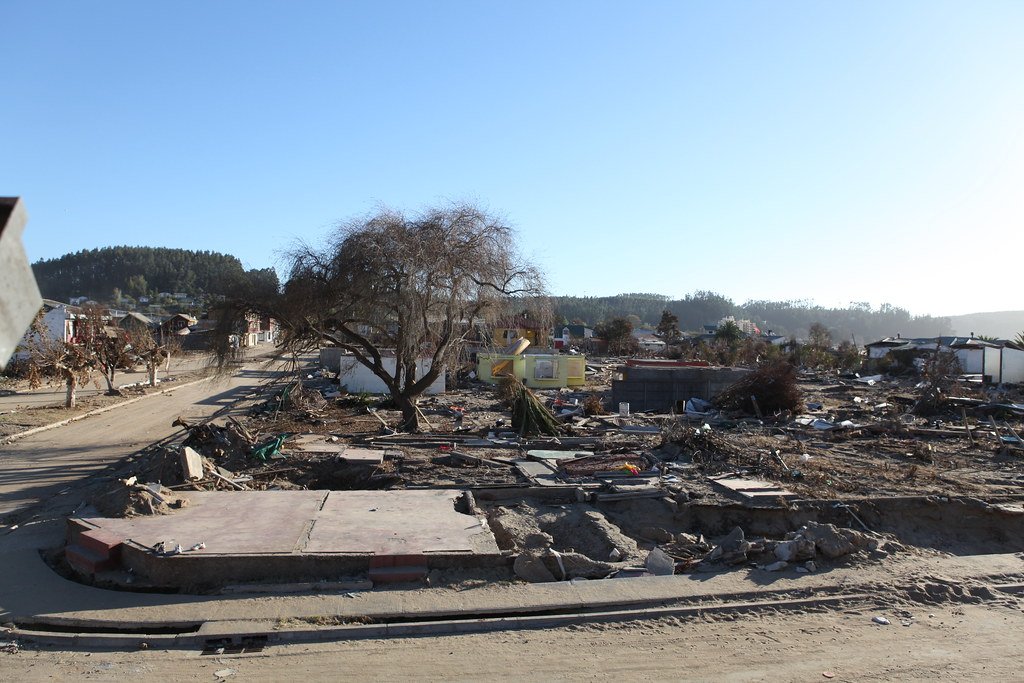
When the next one hits, Cascadia is expected to be the largest disaster the United States has faced. Emergency responders will be overwhelmed. Individuals and families must prepare to be self-sufficient for the first two weeks following the disaster until help can arrive (longer for those living on the coast).
With the current preparedness levels of Oregon, we can anticipate being without services and assistance for at least two weeks, if not longer, when the Cascadia Subduction Zone earthquake occurs. Another 100,000 would be injured, and 1 million people would be displaced. Infrastructure would be devastated.
Washington’s and Oregon’s urban corridors are more than 100 miles from the offshore Cascadia fault, and the level of ground shaking from a magnitude 9 quake is only expected to be moderate – though it will last for several minutes. “Widespread, moderate damage is what we expect,” but the loss of thousands of buildings, coupled with damage to roadways, utilities and other infrastructure, will be enough to disrupt the region’s society and economy.
Conclusion
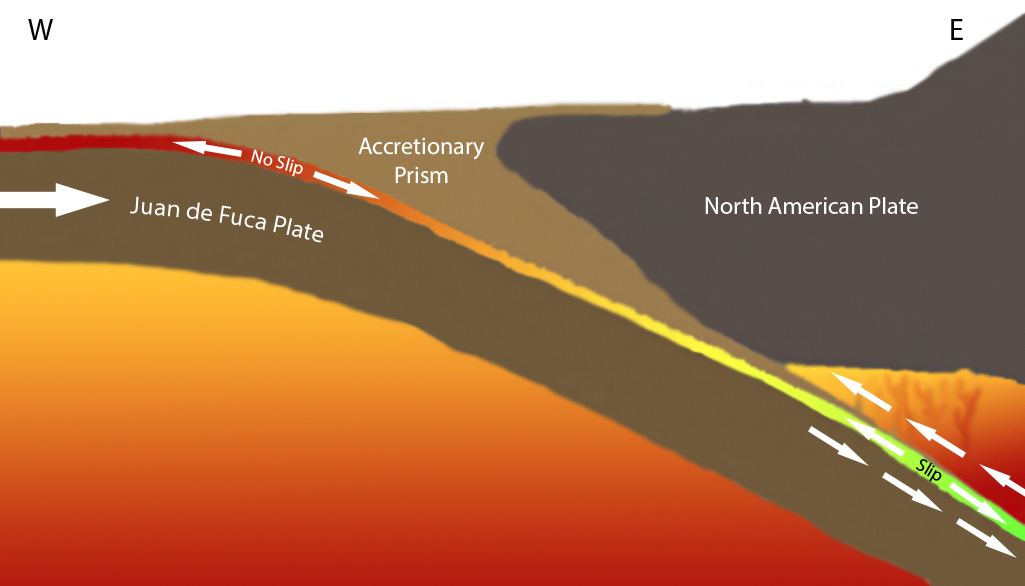
The question isn’t whether the Cascadia Subduction Zone will produce another magnitude 9 earthquake. The question is when. It is not a matter of if but when the next significant Cascadia earthquake and tsunami event will occur. There is a 37% chance of a magnitude 8+ earthquake occurring along the Cascadia Subduction Zone in the next 50 years, with a 7-17% chance of a magnitude 9+ megathrust earthquake, though current data suggests we may already be overdue.
Scientists continue working to understand this geological giant, but time may be running short. Every day that passes without preparation is a day closer to a disaster that could reshape the Pacific Northwest forever. The ghost forests along the coast stand as silent witnesses to what happened before, and what will inevitably happen again.
Are you prepared for when the sleeping giant awakens? What do you think about living with this uncertainty? Tell us in the comments.

Hi, I’m Andrew, and I come from India. Experienced content specialist with a passion for writing. My forte includes health and wellness, Travel, Animals, and Nature. A nature nomad, I am obsessed with mountains and love high-altitude trekking. I have been on several Himalayan treks in India including the Everest Base Camp in Nepal, a profound experience.

